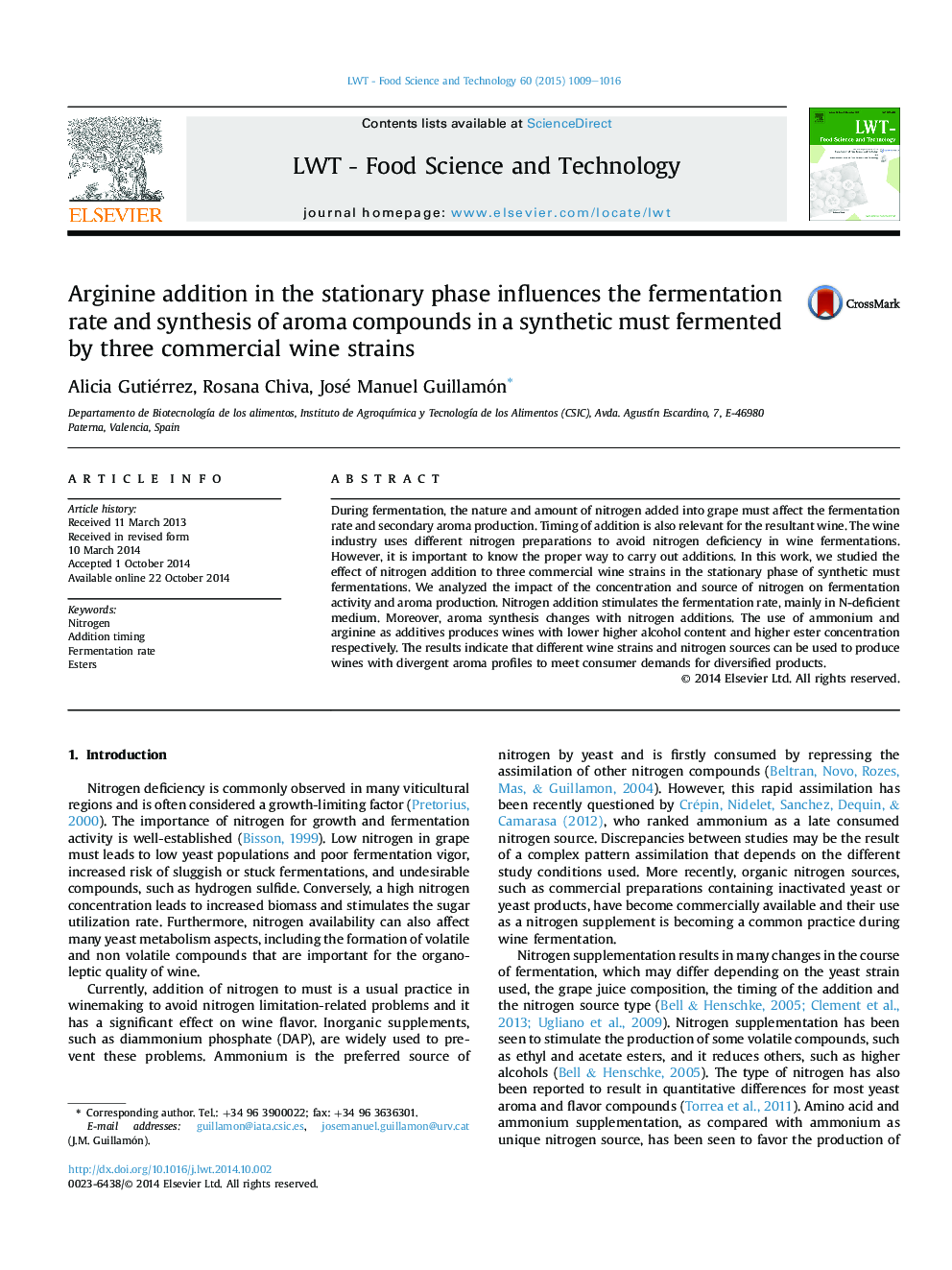| Article ID | Journal | Published Year | Pages | File Type |
|---|---|---|---|---|
| 6402505 | LWT - Food Science and Technology | 2015 | 8 Pages |
Abstract
During fermentation, the nature and amount of nitrogen added into grape must affect the fermentation rate and secondary aroma production. Timing of addition is also relevant for the resultant wine. The wine industry uses different nitrogen preparations to avoid nitrogen deficiency in wine fermentations. However, it is important to know the proper way to carry out additions. In this work, we studied the effect of nitrogen addition to three commercial wine strains in the stationary phase of synthetic must fermentations. We analyzed the impact of the concentration and source of nitrogen on fermentation activity and aroma production. Nitrogen addition stimulates the fermentation rate, mainly in N-deficient medium. Moreover, aroma synthesis changes with nitrogen additions. The use of ammonium and arginine as additives produces wines with lower higher alcohol content and higher ester concentration respectively. The results indicate that different wine strains and nitrogen sources can be used to produce wines with divergent aroma profiles to meet consumer demands for diversified products.
Keywords
Related Topics
Life Sciences
Agricultural and Biological Sciences
Food Science
Authors
Alicia Gutiérrez, Rosana Chiva, José Manuel Guillamón,
